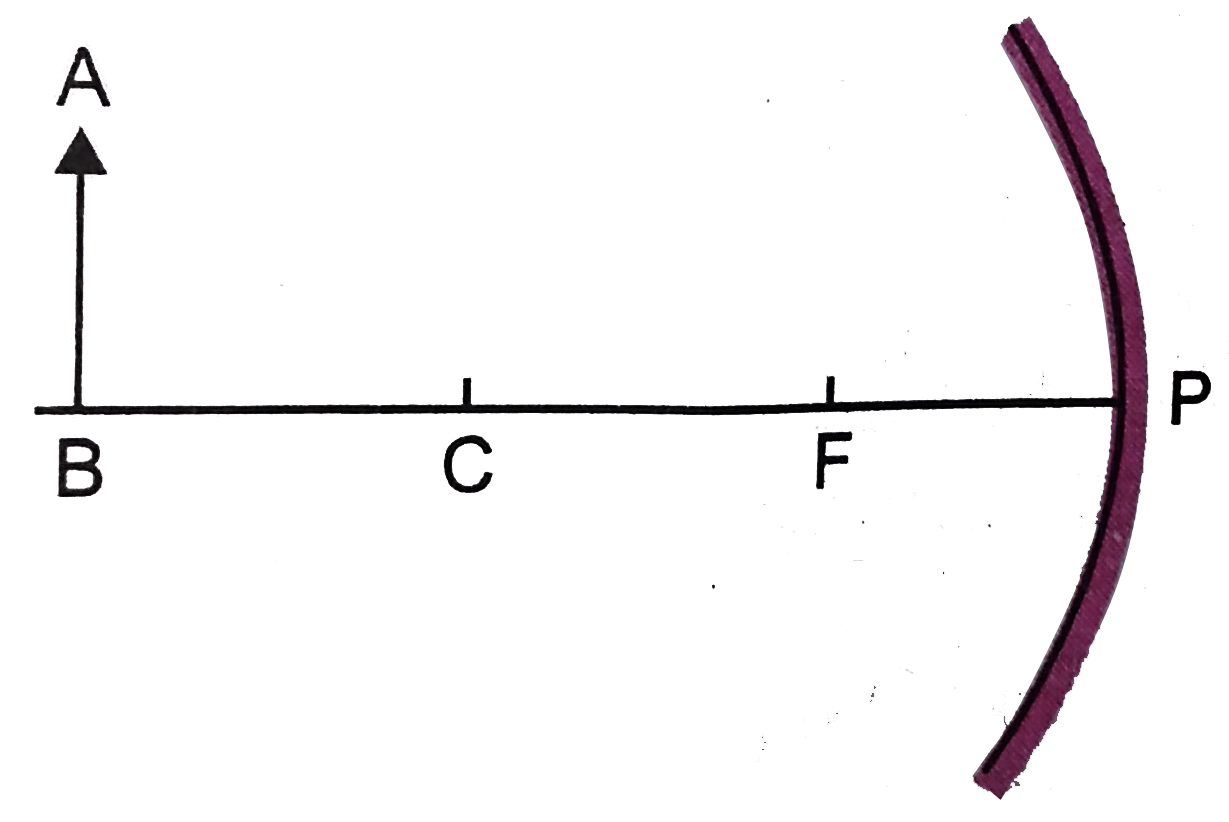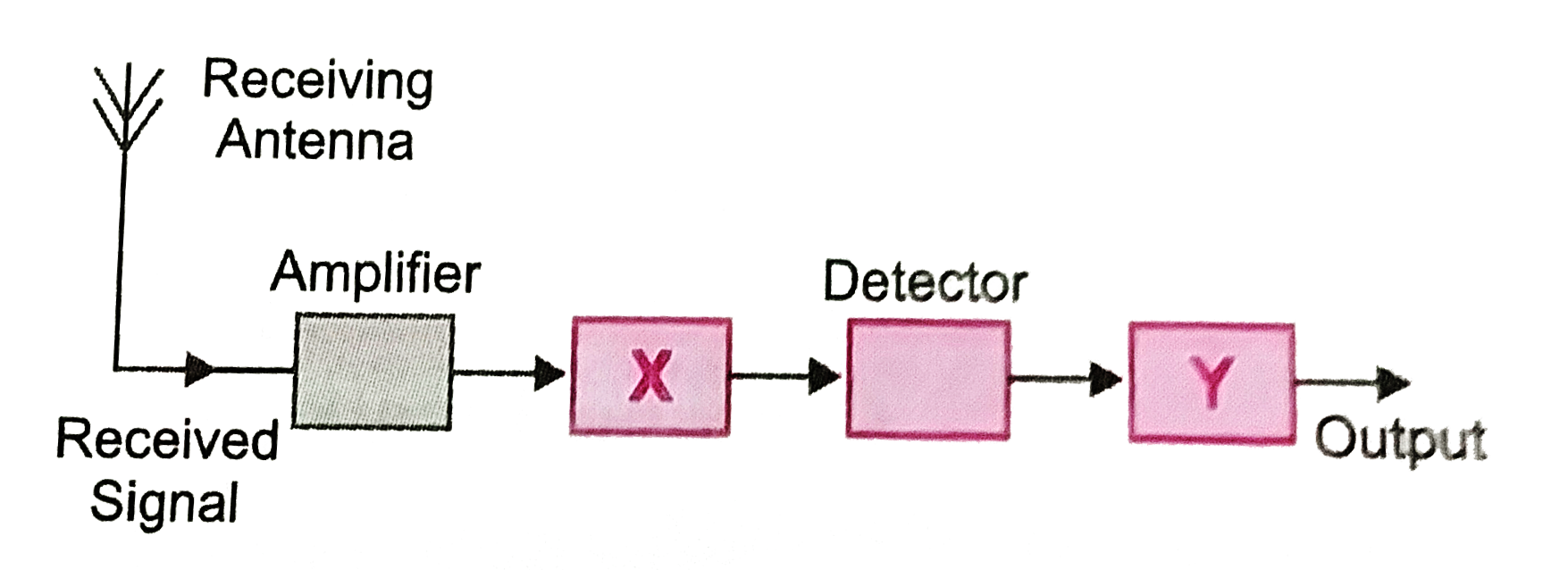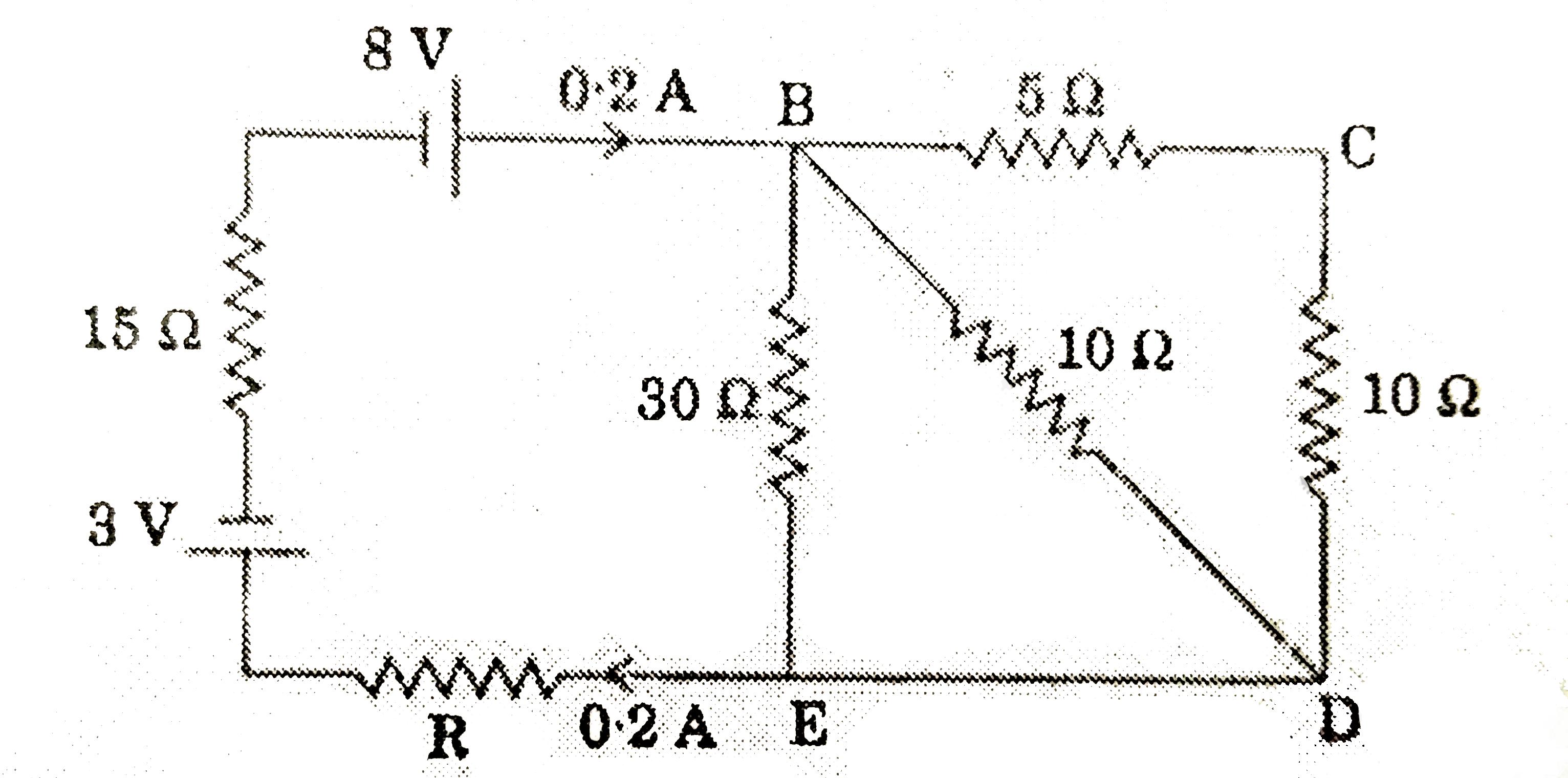Complete Solutions to PHYSICS (Theory) [SET - I] of chapter XII BOARDS of Class 12 book with complete answers and questions
| Class 12 | PHYSICS |
| Chapter | XII BOARDS |
| XII BOARDS PREVIOUS YEAR | PHYSICS (Theory) [SET - I] |
| Number Of Questions | 32 |
| Academic Year | 2023-24 |
Two wires of equal length one of copper and other of manganin have the same resistance. Which wire is thicker?
View SolutionWhat are the directions of electric and magnetic field vectors relative to each other and relative to the direction of propagation of electromagnetic waves ?
View SolutionHow does the angular separation between frings in single-slit diffraction experiment change when the distance of separation between the slit and screen is doubled ?
View SolutionA bar magnet is moved in the direction indicated by the arrow between two coil `PQ` and `CD`. Predict the directions of induced in each coil.

View SolutionFor the same angle of incidence in media P,Q and R, the angles of refraction are `35^@, 25^@,15^@` respectively. In which medium will the velocity of light be minimum?
View SolutionA proton and an electron have same kinetic energy. Which one has greater de-Broglie wavelength and why ?
View SolutionMention two characteristic properties of the material suitable for making core of a transformer.
View SolutionA charge q is placed at the centre of a cube of side `l` what is the electric flux passing through two opposite faces of the cube ?
View SolutionA test charge q is moved without acceleration from A to C along the path from A to B and then from B to C in electric field E as shown in Fig. (i) Calculate the potential difference between A and C (ii) At what point [of A and C] is the electric potential more and why?

View SolutionAn electric dipole is held in a uniform electric field.
(i) Show that the net force acting on it is zero.
(ii) The dipole is aligned parallel to the field. Find the work done in rotating it through the angle of `180^(@)`.
View SolutionA capacitor of capacitance 'C' is being charged by connecting it across a dc source along with an ammeter. Will the ammeter show a momentary deflection during the process of charging? If so, how would you explain this momentary deflection and the resulting continuity of current in the circuit? Write the expression for the current inside the capacitor.
View SolutionAn object `AB` is kept in front of a concave mirror as shown in Fig.

(i) Complete the ray diagram showing the image formation of the object.
(ii) How will the position and intensity of the image be affected surface is painted black ?
View SolutionExplain the scattering of light with an example.
View SolutionDescribe briefly with the help of a circuit diagram, how the flow of current carriers in a p-n-p transistor is regulated with emitter-base junction forward baised and base-collector junction reverse baised.
View SolutionIn the given block diagram of a receiver, Figure, identify the boxes labelled as X and Y and write their functions.

View SolutionA light bulb is rated 100 W for 220 V ac supply of 50 Hz. Calculate
(i) the resistance of the bulb,
(ii) the rms current through the bulb.
View SolutionAn alternating voltage given by `V = 140 sin 314 t` is connected across a pure resistor of 50 ohm. Find (i) the frequency of the source. (ii) the rms current thought the resistor.
View SolutionA circular coil of N turns and radius R carries a current I. It is unwound and rewound to make another coil of radius `R//2.` Current I remaining the same. Calculate the ratio of the magnetic moments of the new coil and the original coil.
View SolutionDeduce the expression for the electrostatic energy stored in a capacitor of capacitance 'C' and having charge 'Q'.
How will the (i) energy stored and (ii) the electric field inside capacitor be affected when it is completely filled with a dielectric material of dielectric constant 'K'?
View SolutionCalculate the value of the resistance R in the circuit shown in the figure so that the current in the circuit is 0.2 A. What would be the potential difference between points B and E?

View SolutionYou are given three lenses `L_(1),L_(2) and L_(3)` each of focal length 20 cm. An object is kept at 40 cm in front of `L_(1),` as shown. The final real image is formed at the focus 'I' of `L_(3).` Find the separations between `L_(1),L_(2) and L_(3).`

View SolutionExplain thermionic emission, field emission and photoelectric emission.
View SolutionObtain the resonant frequency `(omega_(r))` of a series LCR circuit withL = 2.0 H, C = 32 `muF` and R = 10 ohm. What is the Q value of this circuit ?
View SolutionMention three different modes of propagation used in communications system. Explain with the help of a diagram how long distance communication can be achieved by ionospheric reflection of radio waves?
View SolutionDraw a plot of potential energy of a pair of nucleons as a function of their separations. Mark the regions where the nuclear force is (i) attractive and (ii) repulsive. Write any two characteristic features of nuclear forces.
View SolutionIn a Geiger- Marsden experiment, calculate the distance of closest approach to the nucleus of Z=80, when an `alpha` particle of 8 Me V energy impinges on it before it comes momentarily to rest and reverses its direction.
How will the distance of closest approach be affected when the kinetic energy of the `alpha-` particle is doubled ?
View SolutionThe ground state energy of hydrogen atom is `-13.6eV`. If an electron makes a transition form an energy level `-0.85 eV` to `-3.4 eV`, calculate the wavelength of spectral line emitted. To which series of hydrogen spectrum does this wavelength belongs?
View SolutionDefine relaxation time of the free electrons drifting in conductor. How is it related to the drift velocity of free electrons? Use this relation to deduce the expression for the electrical resistivity of the material.
View Solution(a) In Young's double slit experiment, derive the condition for (i) constructive interference and (ii) destructive interference at a point on the screen.
(b) A beam of light consisting of two wavelengths, 800 nm and 600 nm is used to obtain the interference frings in a Young's double slit experiment on a screen placed 1.4 m away. If the two slits are separated by 0.28 mm, calculate the least distance from the central bright maximum where the bright fringes of the two wavelengths coincide.
View Solution(a) How does an unpolarized light incident on polaroid get polarized ?
Describe briefly, with the help of necessary diagram, the polarization of light by reflection from a transparent medium. (b) Two polaroids 'A' and 'B' are kept in crossed position. How should a third polaroid 'C' be placed between them so that the inlensity of polarized light transmitted by polaroid B reduces to `1//8^(th)` of the intensity of unpolarized incident on A?
View Solution(a) Write the expression for the force, `vecF`, acting on a charged particle of charge 'q', moving with a velocity `vecV` in the presence of both electric field `vecE` and magnetic field `vecB`. Obtain the condition under which the particle moves undeflected through the fields.
(b) A rectangular loop of size `lxxb` carrying a steady current I is placed in a uniform magnetic field `vecB`. Prove that the torque `vectau` acting on the loop is given by
`vectau=vecmxxvecB," where "vecm` is the magnetic moment of the loop.
View Solution(a) Explain, giving reasons, the basic difference in converting galvanometer into (i) a voltmeter and (ii) an ammeter.
(b) Two long straight parallel conductors carrying steady currents `I_(1) and I_(2)` are separated by a distance 'd'. Explain briefly, with the help of a suitable diagram, how the magnetic field due to one conductor acts on the other. Hence deduce the expression for the force acting between the two conductors. Mention the nature of this force.
View Solution
PHYSICS (Theory) [SET - I] questions and complete solutions for chapter XII BOARDS of XII BOARDS PREVIOUS YEAR of Class 12
All Exercises from XII BOARDS PREVIOUS YEAR Class 12 PHYSICS XII BOARDS
- C.B.S.E.CLASS-XII PHYSICS (THEORY) [SET-I]
- C.B.S.E.CLASS-XII PHYSICS (THEORY) [SET-I]
- C.B.S.E.CLASS-XII PHYSICS (THEORY) [SET-I] (SECTION-A)
- C.B.S.E.CLASS-XII PHYSICS (THEORY) [SET-I] (SECTION-A)
- PHYSICS
- PHYSICS
- PHYSICS (Theory) DELHI BOARD -2016 [SET -I][COMPTT.]
- PHYSICS (Theory) DELHI BOARD -2016 [SET -I][COMPTT.]
- PHYSICS (Theory) [SET - III]
- PHYSICS (Theory) [SET - III]
- PHYSICS (Theory) [SET - II]
- PHYSICS (Theory) [SET - II]
- PHYSICS (Theory) [SET - I]
- PHYSICS (Theory) [SET - I]
- PHYSICS (Theory) [SET -I]
- PHYSICS (Theory) [SET -I]
- SECTION - C
- SECTION - C
- SECTION - A
- SECTION - A
- SECTION - B
- SECTION - B
- SECTION - C
- SECTION - C
- SECTION - D
- SECTION - D
- SECTION - E
- SECTION - E
- Section -A
- Section -A
- Section -B
- Section -B
- Section -C
- Section -C
- section -D
- section -D
- section -E
- section -E
- section A
- section A
- section B
- section B
- section C
- section C
- SECTION-A
- SECTION-A
- SECTION-B
- SECTION-B
- SECTION-C
- SECTION-C
- Section-D
- Section-D
- Section-E
- Section-E
- SECTIONS-B
- SECTIONS-B
- SECTIONS-C
- SECTIONS-C
- SECTIONS-D
- SECTIONS-D
- SECTIONS-E
- SECTIONS-E
- SET - I
- SET - I
- SET - II (Delhi Board)
- SET - II (Delhi Board)
- SET - III (Delhi Board)
- SET - III (Delhi Board)
- SET -I
- SET -I
- SET -II
- SET -II
- SET -III
- SET -III
- SET I
- SET I
- SET II
- SET II
- SET III
- SET III
- SET-I
- SET-I
- SET-I (SECTION-A)
- SET-I (SECTION-A)
- SET-I (SECTION-B)
- SET-I (SECTION-B)
- SET-I (SECTION-C)
- SET-I (SECTION-C)
- SET-I (SECTION-D)
- SET-I (SECTION-D)
- SET-I (SECTION-E)
- SET-I (SECTION-E)
- SET-II
- SET-II
- SET-II DELHI BOARD (SEC-B)
- SET-II DELHI BOARD (SEC-B)
- SET-II DELHI BOARD (SEC-C)
- SET-II DELHI BOARD (SEC-C)
- SET-II, DELHI BOARD
- SET-II, DELHI BOARD
- SET-III
- SET-III
- SET-III DELHI BOARD
- SET-III DELHI BOARD
- SET-III DELHI BOARD SEC-C
- SET-III DELHI BOARD SEC-C
- SET-III, DELHI BOARD
- SET-III, DELHI BOARD
- [SET - II DELHI BOARD]
- [SET - II DELHI BOARD]
- [SET - III, DELHI BOARD]
- [SET - III, DELHI BOARD]
- [SET - I]
- [SET - I]
- [SET -II, OUTSIDE DELHI]
- [SET -II, OUTSIDE DELHI]
- [SET -III, OUTSIDE DELHI]
- [SET -III, OUTSIDE DELHI]
- [Set- II]
- [Set- II]
- [Set-III]
- [Set-III]